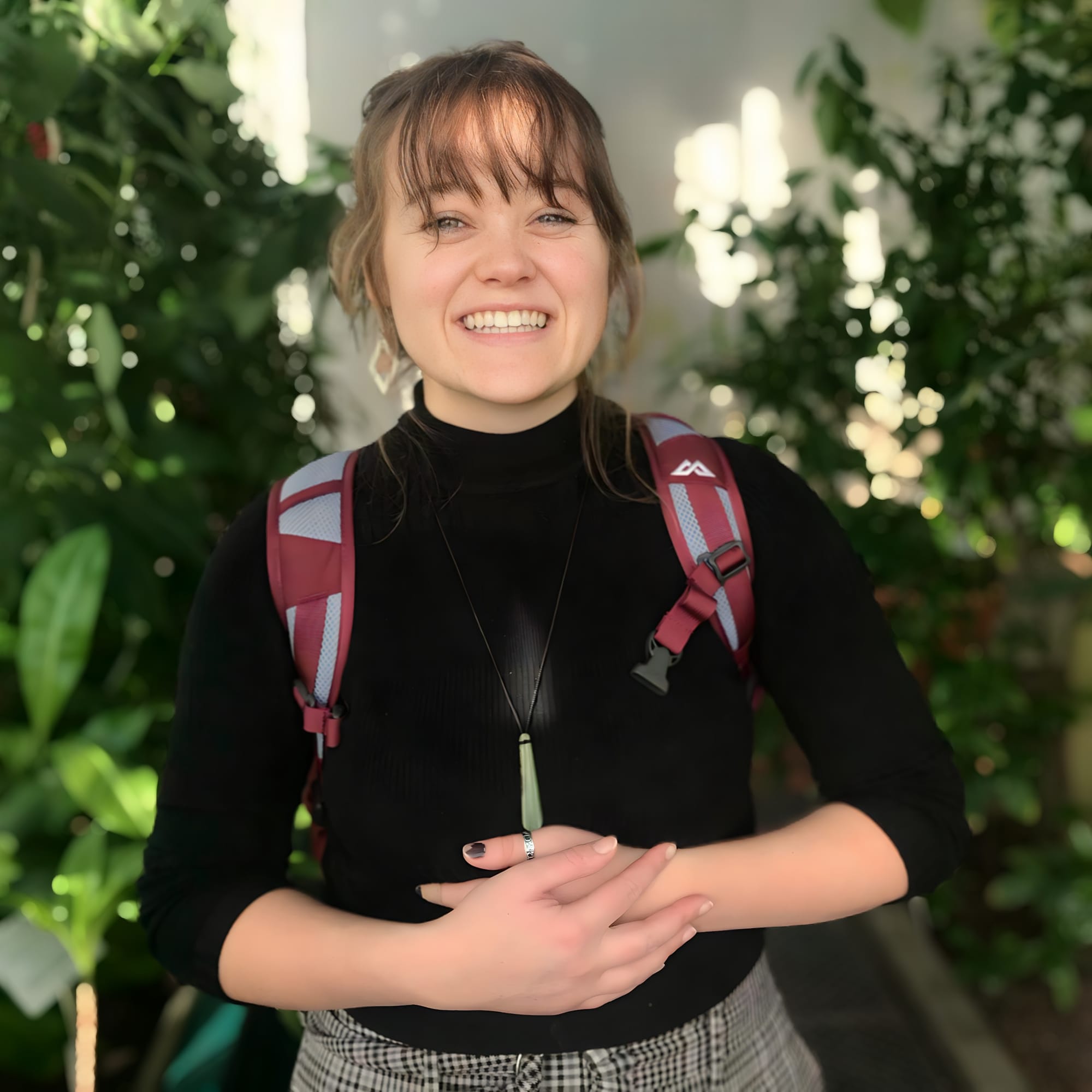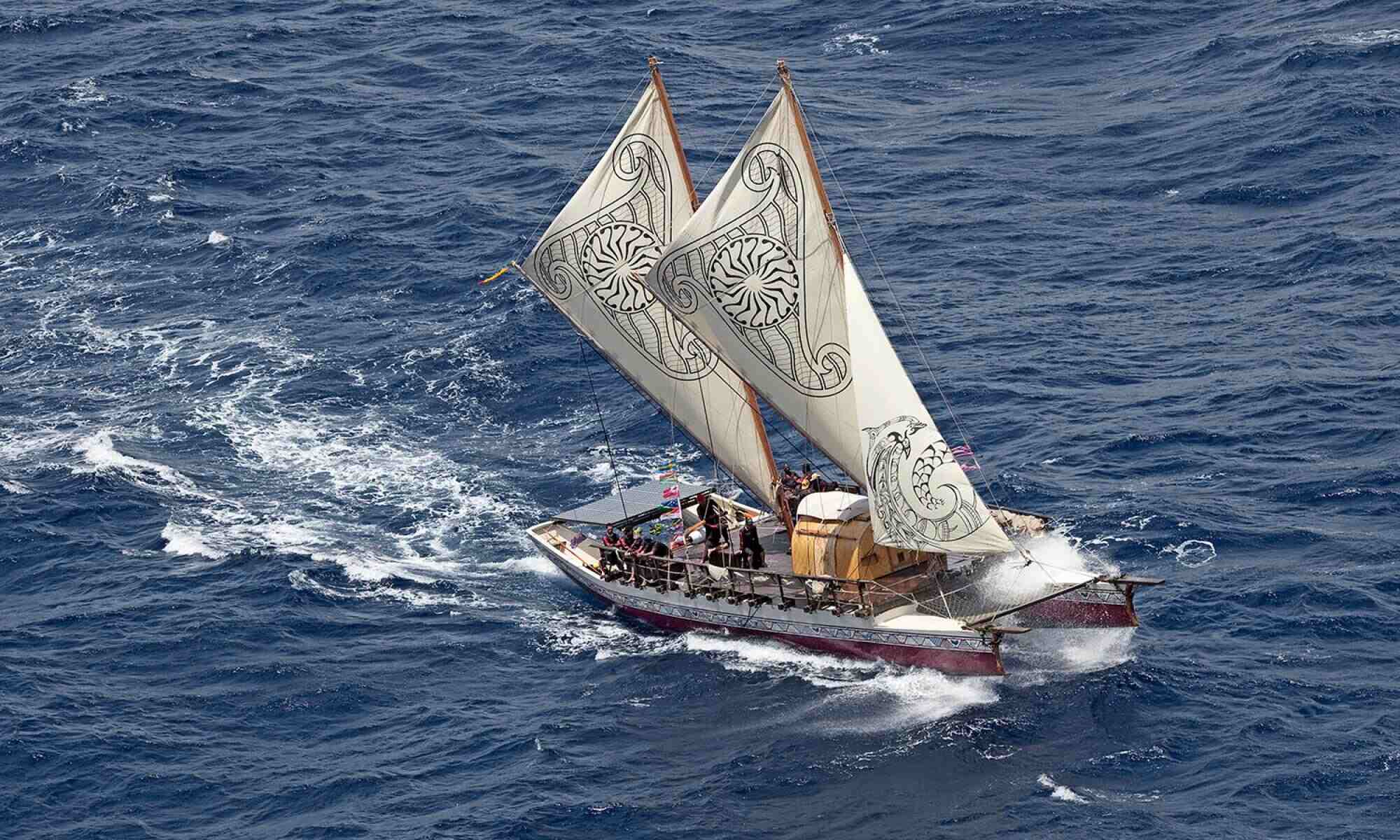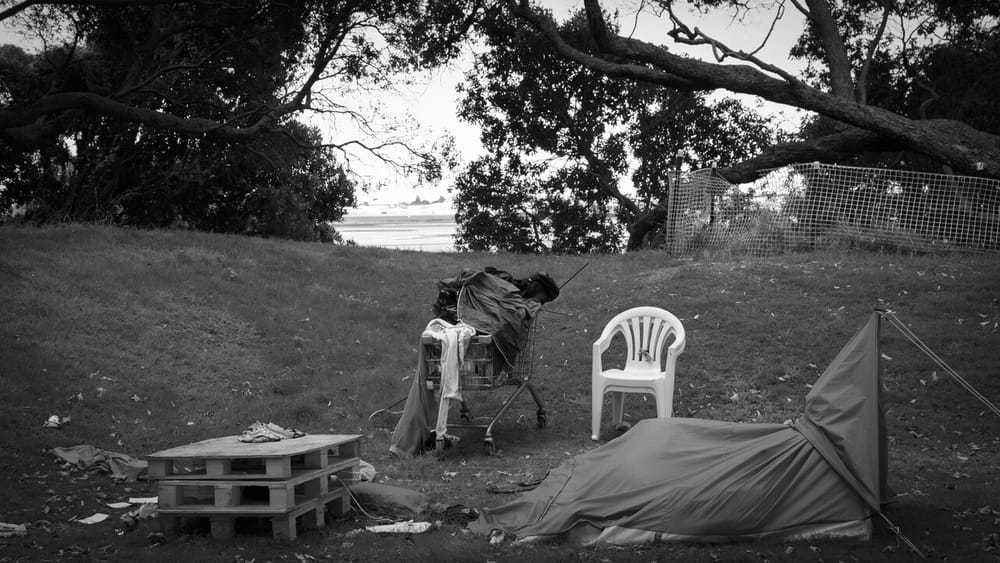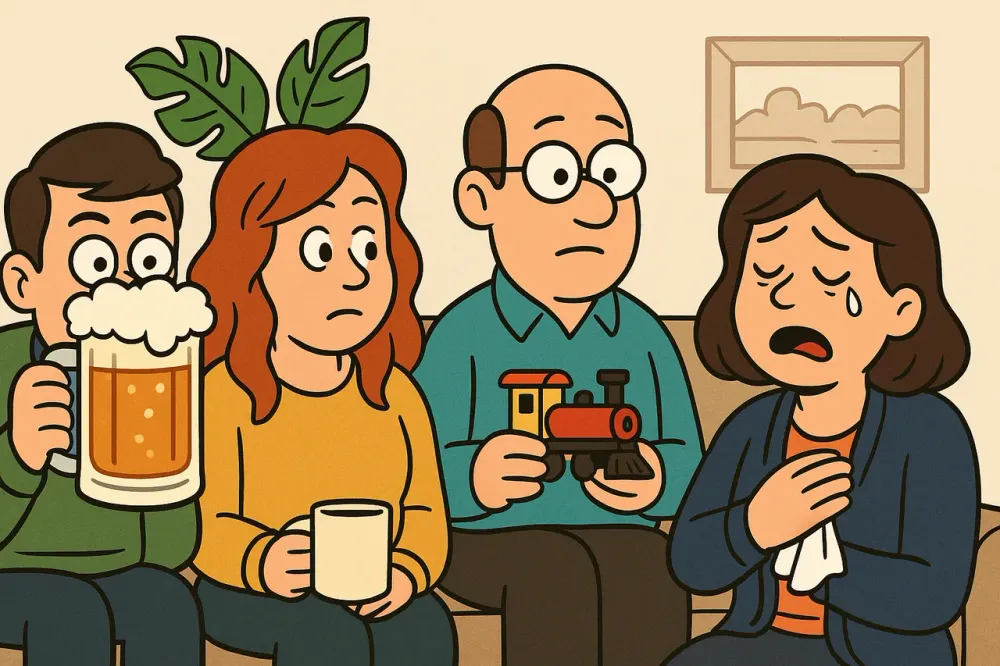When we think of intrepid ocean explorers, images of tall Viking raiders battling rolling waves and settling cold distant lands come to mind.
Very rarely do we consider the much more extraordinary feat which went on at the bottom of the Earth, long before the Vikings took to the seas.
Within the Pacific ocean—an area making up one-third of the Earth's surface—the settlement of West Polynesia began some 3000 years ago, seeding one of the most expansive and rapid phases of human migration in prehistory. Early Polynesian explorers discovered and settled island after island, using unparalleled navigational knowledge embedded within their folklore and oral traditions. When the Europeans arrived in the Pacific, they were astounded by the highly developed systems and technologies the Polynesians possessed. Then, colonisation rewrote history.
I had the opportunity to speak to Andrew Crowe, award-winning author of over 40 books, with a focus on the natural world. Originally from London, he made his home in Aotearoa, New Zealand at the age of 20. His latest book, Pathway of the Birds: The Voyaging Achievements of Māori and their Polynesian Ancestors (pub. Bateman, Auckland and University of Hawai'i Press, Honolulu, 2018) is a comprehensive exploration of evidence which sheds light on the settlement of the Pacific, challenging the dominant claim that it all simply happened by chance. Pathway of the Birds has won the New Zealand Heritage Book Award, two Ka Palapala Po'okela Awards and a Storylines Notable Book Award. Now, history is being written again.
We are here to talk about your recent book Pathway of the Birds. You say that the commonalities of language across the Pacific served as an entry point into this research, would you be able to provide us with some of the background to this?
The book really began from wanting to know where the Māori names of New Zealand plants, birds, fish, insects, etc. come from. I was producing a series of New Zealand field guides, where I try to put readers on first name terms with the natural world. Here, in New Zealand, that means Māori names. I was curious about where these names originate, so when a friend passed me a comparative dictionary of Polynesian languages, I dived into it. Within minutes, I could see a web of interconnections stretching right across the Pacific. I spotted names like 'ie'ie for an Hawaiian native vine that is practically identical to a New Zealand one called kiekie, for example. What does this shared body of knowledge imply, I thought, when 6800 kilometres of open ocean lies between the two places? Until that moment I had no idea just how vast the cultural region of Māori was.
Understandably, the book is explored from an Aotearoa/New Zealand perspective. Would you be able to explain how the term ‘Māori’ is used throughout the Pacific and the importance of Hawaiki?
When Māori speak of coming from Hawaiki, many Europeans have made two wrong assumptions, namely that their sailing canoes all came to New Zealand from one island, and secondly, that that place could be identified from this name. But, in reality, the meaning of Hawaiki is much broader, referring to a previous homeland, either physical or metaphysical. Hence, various forms of this name can be found for different locations in East Polynesia. In English, the equivalent term might be ‘home’ (or hām in Old English) as in Nottingham, Birmingham, or Buckingham, with a corresponding metaphysical use of the term when a dying person asks, “Is it time to go home now?” As for the term Māori, it too is not specific to a place; its original meaning is ‘normal, true or genuine’. Its use by Polynesians to differentiate themselves from non-native people can be traced no further back than about 1800 and is a use now shared throughout much of East Polynesia—in the Cook Islands (Māori), Marquesas (Mao'i), Hawai`i (Maoli) and Tahiti (Mā'ohi). It essentially means the first people, the Indigenous population.
What are the common perceptions concerning the Polynesian expansion and their arrival in Aotearoa?
There is a range of views, but I think it [is] fair to say that many still envisage Pacific people as castaways—fishing trips that went wrong—a series of accidental voyages. Others see conflict and hunger driving desperate people out to sea in canoes, fully laden with families, crops and animals on board, with no particular destination in mind—heroic but not necessarily skilful. By conflating their voyages of exploration and settlement, they belittle the greatest maritime achievement of Polynesians: their ability to find and re-find incredibly small and/or remote maritime targets. Perceptions are slowly changing now though, largely through a renaissance in Pacific voyaging using non-instrument navigation to sail long distances. Their skills have been relearnt from old-time navigators such as Pius Mau Piailug of Satawal, Tenanoa of Tarawa and Te Aliki Koloso Kahia Kaveia of Taumako in the Duff Islands who absorbed these skills from the elders as children.
You have made it clear that the achievements of these early Polynesian voyagers were deliberate and use the term ‘wayfinder’ instead of navigator; could you elaborate on your choice of language here? What do you think drove the Polynesians to explore so?
Navigation generally implies precise knowledge of where you are in relation to a known destination. The term ‘wayfinding’ points to the more fluid art of being able to read the natural world sufficiently well to not get lost. As for what drove Polynesians to explore, I believe curiosity, a sense of adventure and kudos at finding new resources. Basically, an entrepreneurial spirit rather than desperation. This is consistent with the readiness with which 18th-century Tahitians like Ahutoru and Tupa'ia volunteered to join European ships, and with the scale and speed with which the Polynesian expansion occurred.
So with reference to the title of the book, what role did the birds play in the wayfinding process? Were they more influential than other methods like following the whale migrations or tracking the stars, or were they part of a whole?
In the words of Hawaiian master navigator Nainoa Thompson, “Everything you need to navigate is in nature. The question is, can you see it?” This includes both those examples you gave—whale migration routes and the stars, both of which serve as reference points for orientation and location. Where the birds have a leading role to play is in helping to locate dry land. These land-finding birds fall into three main categories. In the first are pet birds such as frigate birds that were traditionally carried aboard the canoes for release. Frigate birds have unoiled feathers and are therefore unwilling to settle on water, so can be trusted to either head off in the direction of land or to return to the canoe. In the second group are the local seabird species that stick close to their breeding colonies, always returning to land at night. The third group consists of migrating birds, whether they be forest birds, shorebirds or seabirds. The last of these, the migrating seabirds, are especially useful as they fly at sea level in enormous numbers in spring when returning to land to lay their eggs. They follow wind-sensitive pathways over long distances as referred to in Polynesian voyaging chants and, of course, in the book’s title.
What do the commonalities of language tell us about Māori today? Can we figure out where the initial settlers of Aotearoa came from?
The vocabulary of New Zealand Māori links them clearly with East Polynesia. A good example of this is found in the names of navigational stars. ‘East Polynesia’ here refers to a cultural region of the Pacific that stretches from the Hawaiian Islands in the north down to Rapa Nui and Aotearoa in the south but excluding the cultural region of Sāmoa, Tonga and neighbouring islands, which are referred to as West Polynesia.
Do you think that there were continued interactions between the early Polynesian settlers of Aotearoa and those throughout the Pacific after the initial settlement? What leads you to your conclusion?
Several Māori traditions do refer specifically to return voyages from Aotearoa, generally to obtain kūmara (sweet potato). Archaeological support for such voyages can be found along the likely routes of return—in both the Chatham Islands and the Kermadec Islands, where flakes of New Zealand obsidian have been found. Obsidian is a black volcanic glass that Māori used for making cutting tools.
We know that the kūmara originated in South America, but in your book, there is a brief mention of potential language similarities between the Polynesians and some Indigenous Northern American tribes. Could you elaborate on what you found here?
We have compelling evidence for contact with South America, as you say. As for North America, Hawaiians regularly see pine logs drifting over from there, so it seems plausible that they were at least aware of sizeable land to the east. Actual evidence for contact with the Americas at this latitude is not considered conclusive, but linguists have identified three Polynesian canoe terms that are shared with the Chumash and Gabrielino people of the Los Angeles region of California.
The waka (canoe), the Hinemoana, is featured on the cover of the book; would you be able to tell us the story behind it?
For years, I had been finding no more than half-hearted interest from publishers for this book, but then a friend, Dr Simon McDonald, offered to take a look at it. Within weeks, he wrote back that this draft had inspired him to purchase an ocean-going waka and set up a foundation to offer young Māori, Polynesians and other New Zealanders the opportunity to appreciate the seafaring experiences of their ancestors. He’d put in two to three million dollars, he said. Would I like to be involved? That’s the point at which I knew for sure that I was not the only person moved by what the book had to say. Simon is a man of action. He went ahead with the project and the book was duly launched on board their waka, Hinemoana, in 2018. And, as you say, there she is again sailing across the front cover. Kia ora, Simon!
One of the things that really amazed me in your book was the meaning of the word ‘roto’. As you say, it means both ‘in’ and ‘lake’, and once you understand the nature of atolls, it makes sense. Were there any small facts that you found during your research process that really stood out to you?
So many of these kinds of insights can be found in the language. No less fascinating are the stories told by the DNA of everything from snails, lizards and rats, to humans. If I were to pick out a couple things that stood out for me personally, perhaps they would be the wealth of evidence of inter-archipelago trade in material used for making stone tools and the extraordinary geographical extent of navigational knowledge demonstrated to Captain Cook by the Tahitian navigator Tupaia. But it is really hard to pick out any one thing. The book is essentially a mosaic of pieces gathered from an unusually wide range of disciplines—archaeology, palaeoecology, astronomy, genetics, ethnology and linguistics, Polynesian poetry, wind tunnel experiments—to name a few.
I understand that it took around 15 years to write this book. Is there anything that you have learnt in the two years since the book’s publication that you wish you could add to it now?
I may not need to add this to the book, but there is a postscript for me personally. There is an understandable wariness of Māori around a member of the colonising culture writing about their history, so I didn’t embark on this journey without supportive critique from informed Māori. Now that the book has been out for two years, I am heartened by the response to co-presenting these days, about the book, with experienced navigators. It is not something I take for granted.
Final question—and this is a bit of a big one—how does this book fit within the bigger understanding of the Polynesian migration and why do you think there is such a reluctance to give Polynesians the recognition they deserve?
A big topic indeed! I think society’s reluctance to recognise the great achievements of Polynesians is due essentially to lack of information or even discussion, which is a legacy of colonisation. In schools—even in Pacific rim countries like Aotearoa—the founding history of Oceania (one third of the planet) rarely gets a mention. The same is true if you go into a bookshop or library: you will find many more books about the history of European navigation than about the original exploration of the Pacific. Without that background material (or personal experience), few can even start to imagine how Polynesians were able to do what they did—from carving and moving enormous stone statues on Rapa Nui to how their two-way navigation worked. Fill that void—as the Polynesian Voyaging Society and others are currently doing—and I believe that the dominant culture will finally come to acknowledge that settling the Pacific is one of the greatest achievements of humankind. As Te Rangi Hīroa (Sir Peter Buck) put it in his classic, Vikings of the Sunrise (1938), Polynesians are “the supreme navigators of history”. It’s surely only a matter of time before the global significance of this story is recognised.







